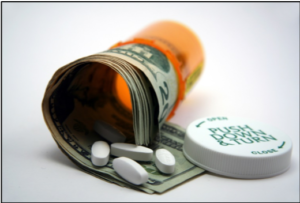 If you have health insurance, you may think that all potential healthcare expenses are covered – or at least that you’ve done all you can to be covered. However, you might want to look into critical-illness insurance.
If you have health insurance, you may think that all potential healthcare expenses are covered – or at least that you’ve done all you can to be covered. However, you might want to look into critical-illness insurance.
First, a question for you. What’s the No. 1 cause of personal bankruptcy? Credit card debt? Unmanageable mortgages after a job loss? Gambling excesses? Nope, nope, and nope. The answer is unpaid medical bills. The folks at NerdWallet.com have estimated that households containing about 1.4 million people filed for bankruptcy protection in 2017 because of steep medical costs – often associated with a serious illness. And there are many other people with massive medical bills who avoid bankruptcy, but only by wiping out their savings and/or retirement funds.
What Is Critical-Illness Insurance and What Does It Do?
This kind of insurance exists simply to cover the major costs that result from a serious illness such as cancer, stroke, and heart attack. If you are diagnosed with an illness that’s covered by the policy, you will receive all or a portion of the policy’s face value in a lump sum tax free. The money can be used for anything you wish. Yes, your health insurance will assist with the medical bills but there are deductibles, copays, and coinsurance to be accounted for, not to mention the costs associated with lost income, travel to distant treatment centers, and super-expensive medications. What if the best place for your cancer treatment is out-of-state and/or your health insurance isn’t accepted there?
What Does Critical-Illness Insurance Cost?
Compared to long-term care insurance and disability insurance, critical-illness insurance is quite reasonably priced. You can get coverage that will pay out a lump sum that ranges from $10,000 to $1 million. For example, a 55-year-old can have a $30,000 critical-illness policy covering cancer, heart-attack and stroke for about $110.00 per month. Of course there are some health questions to answer in order to qualify for the coverage, but for amounts under $100,000, the underwriting process is simple and quick.
So for a relatively small amount of cost, you can have a relatively large amount of peace of mind.


